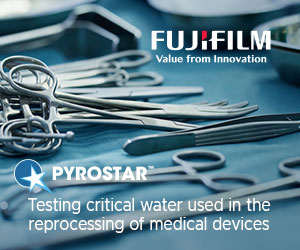Thermo Fisher Focus ...
How to Avoid Contami...
13th August 2019 Product update: Paul Carton
New Improved Method in Detecting Lyme Disease
The cumbersome obligatory immunoblot step in detecting Lyme disease in patients may be a thing of the past due to a new method developed by ZEUS Scientific. For the past 25 years the centre of disease control (CDC) has advised clinicians to use the ‘Standard Two-Tier Testing (STTT)’ method to accurately diagnose patients with Lyme disease, which although been very effective was criticised for being overly complicated and insensitive due to the second tier step of the western blot/immunoblot assay.
Zeus Scientific, who are based in New Jersey, US, have announced US FDA 510 (K) clearance for its Modified Two-Tier Testing (MTTT) method which replaces the immunoblot step with a fully automated second tier test which uses a separate enzyme linked immunoabsorbent assay (ELISA). Zeus state, they have information on file that their Borrelia MTTT™ was 30 % more sensitive than the STTT method at detecting Lyme disease in patients. This MTTT uses ZEUS ELISA™ Borrelia VlsE1/pepC10 IgG/IgM Test System as a first-tier test with positive or equivocal specimens subsequently tested using a second ZEUS ELISA™ Test System.
Ticks are tiny and even smaller are the spirochetal bacterium that infects people with Lyme disease which can be a major problem resulting in muscle and nerve collapse if undetected and subsequently untreated. Borrelia burgdoferi sensu stricto is primarily the sole source of Lyme disease in the US and is a bacterium that is transmitted by the blacklegged tick Ixodes ricinus when they bite you.
If the tests clinicians use on patients to detect the pathogen is not sensitive enough to diagnose accurately , sufferers of lyme disease can be troubled with an array of problems most notably damage to the nervous system. Bell’s palsy is one of these conditions, which is the result of a single nerve in the face the bacterium destroys leaving the patient to be afflicted with a drooping face.
Zeus claim their new Borrelia MTTT™ algorithm has the following benefits: Improved sensitivity in early Lyme disease detection, fully automatable first- and second-tier testing workflow (not easily achievable with STTT), removal of subjectivity in reading Western and immunoblots and automation of time-intensive, error-prone manual tasks and elimination of send-out expenses and improving turnaround time and cost efficiencies.
In a press release, on the announcement of receiving US FDA 510 (K) clearance, Chris Howard, Chief Commercial Officer at ZEUS Scientific said in a press release, “With nearly 30% of early Lyme disease cases being potentially missed by the current STTT algorithm due to the insensitivity of immunoblot tests, we are ecstatic to have successfully improved one of the most challenging aspects of diagnosis: detecting the disease early, before a robust immune response has been developed by some patients.” Howard continued, “Our ZEUS Borrelia MTTT™ algorithm detected up to 30% more acute Lyme disease cases relative to the STTT, significantly reducing the number of missed clinically positive patient samples while maximizing lab efficiency with fully automatable immunoassays.”
“The prevalence of Lyme disease is growing and is difficult to diagnose early, at a time when patients need it most,” stated Scott Tourville, Chief Executive Officer of ZEUS Scientific. “This testing paradigm shift is a successful response to longstanding clinical and workflow challenges in the laboratory. I am extremely proud of our research and clinical trial teams in making the promise of MTTT a reality. Labs gain fast, accurate results through an efficient protocol, doctors gain higher confidence in diagnostic assessment, and patients achieve better care with appropriate diagnosis.”
Thirty years ago, ZEUS pioneered the serodiagnosis of Lyme disease with the very first FDA-cleared screening test and now it seems they have done it again. With early detection and a more sensitive method Lyme disease sufferers can be diagnosed quicker, and now with the correct antibiotics given can fully recover and no longer will Lyme disease be a chronic affliction.
Date Published: 13th August 2019
Note: This content has been edited by a rapidmicrobiology staff writer for style and content.
Related news
Thermo Fisher Focus on Microbiology
How to Avoid Contamination in






